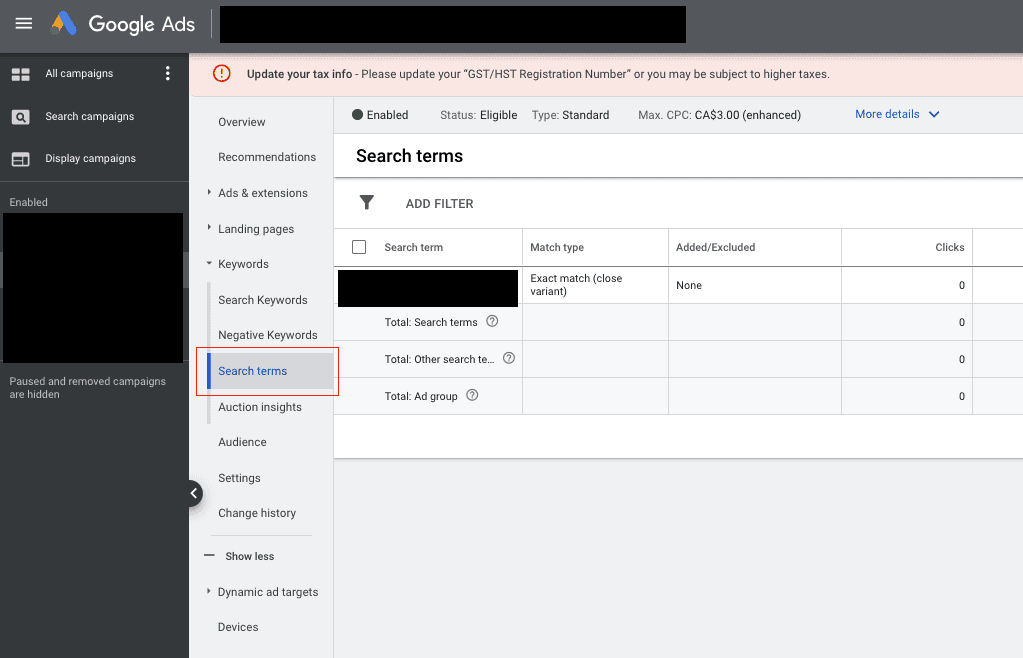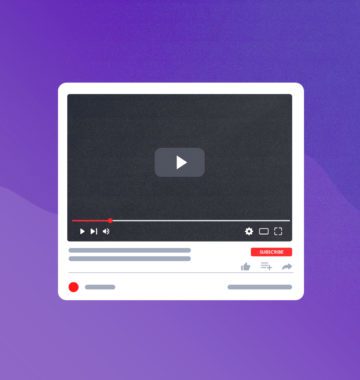Your PPC campaign isn’t working. You set up the account, you found the keywords, you wrote the ads, you put in your credit card, you spent money… and nothing much is happening.
Or maybe you hired someone to do everything, but it still isn’t performing.
While the plan should be simple and straightforward—find relevant keywords and pay for those clicks—it’s hard to actually drive traffic that converts.
Let’s dive into the common PPC campaign problems we’ve seen, and how to fix them.
Post Contents
Why do PPC campaigns fail?
If your PPC campaigns aren’t getting results, the problem usually comes from one (or more) of three broad categories:
- Issues with ad platform configuration
- Issues on the landing page
- Issues with ROI—PPC is too expensive for your business
1. Issues with Ad Platform Configuration
These are problems with the way things are set up, and they directly affect the audience you’re reaching and the types of traffic you’re paying for. This is why optimizations can mean the difference between a profitable account and one that isn’t.
Audience
For starters, you need to make sure that you’re bidding on the right keywords to reach the people who need your product. Look at your search terms report to see the words people actually search that trigger your ads to be shown. Google doesn’t show all of them—they cite privacy as the reason—but auditing this report is still an absolute must.

You can also do a Google search for the keywords you’re bidding on, and look at the other ads being shown to gauge if this is where you belong. Are they in your industry? Are they a similar product?
Also, check your campaign settings to make sure your location targeting is not set to “People in, regularly in, or who’ve shown interest in your targeted locations.” Google will say this is “recommended.” Most of the time, it isn’t.
Here’s why: let’s say you’re a business who can only sell to people in Canada. If you target Canada only, but you leave this setting on, Google will show ads to people “interested in” Canada. Really?! No. We don’t want that. I can already hear the wasted spend piling up.


Improper or no Conversion Tracking
You absolutely MUST be tracking conversions to be able to say whether or not your campaigns are doing their job. The one exception to this is if you’re running display ads designed for brand awareness, and you don’t care what happens when someone comes to the site – but you should care.
And for the record, save yourself some money and don’t bother with display ads.
Ad Copy
What is your CTR (click-through-rate)? If it’s below 2%, it’s time to revisit the copy.
Nothing kills search ad success quicker than bad copy. Persuasive copywriting is an art, so it might be worth spending time brushing up your skills and then trying again.
Try adding more keywords to your copy, more benefits, and compelling CTAs (calls to action).
Account Structure
Structuring your PPC account is important so that you can quickly see the data you need and evaluate ad spend based on goals, locations, etc. It also has a meaningful impact on your ROI, because if you allocate too much spend on an underperforming campaign, you’re just wasting money faster.
A good way to group campaigns is by product, product category, or offer. Another way to think about this is by landing pages. Within this, you should segment your ad groups by theme, and group keywords accordingly. You don’t need to add that many keywords; more is not better. Pick a few—say one to five—highly relevant and on-theme keywords.
For example, let’s say I’m running travel campaigns. I’d have a campaign for each destination’s landing page on my site, and ad groups for different themes. Examples might be a summer theme, a cheap flights theme, and a vacation theme, depending on the actual keywords and search volume.
Match Types
Google is taking away broad match modifiers, so I’m a fan of using both phrase match and exact match keywords in your campaigns. In fact, when the budget is tight and the CPC (cost-per-click) is high, you might consider using exact match only. You can split them by ad group, but mostly I think it’s fine to put them both in the same ad group.
The key here, especially when your budget is limited, is to not use broad keywords. Google will match your ads to completely irrelevant searches and you’ll end up spending 3K on “jack and the beanstalk” when you’re bidding on “coffee beans.”
Negative Keywords
Just like the right keywords can boost your results, the wrong keywords can bog down your campaigns – and burn your budget.
You need to remove irrelevant keywords that drive traffic that will never buy your product or become a lead. It’s a good idea to learn about search intent, and how it impacts conversions.
Look at your search terms report, and exclude irrelevant keywords. You can identify negative keywords through your own understanding of your product and how your audience searches. For example, a campaign for men’s watches could have ‘women’s watches’ as a negative keyword.
Budget
You need to spend enough money. That’s just how PPC works.
Think of a car stuck in the snow; it’s never going to get out without enough traction. It’s the same thing here: the LESS you spend, the SLOWER you learn and the MORE you think it’s not working.
That’s why PPC isn’t the right choice for every business. Thankfully, there are ways to discern this – we’ll show you how at the end.
2. Issues on the Landing Page
It’s very easy to spend 90% (or more) of your time on ads, and completely forget that where you’re sending people has a massive impact on your ROI. The most qualified, ready to buy people will not take on action on a page that doesn’t properly communicate the value in your offer, or worse, adds barriers to conversion like slow load times, poor checkout experiences or broken forms.
Consistency
Is the content on the landing page (LP) consistent with what the keywords and ad copy promise? It needs to be.
If your ad says “free demo”, the LP has to have “Get Free Demo” as the CTA. If your campaign and ads are for a product, the LP needs to be the product page.
The Offer
This is HUGE. Your offer must simultaneously be both majorly compelling and a small enough ask that it’s worth the effort to complete the action on the LP.
For example, a retirement home with a CTA to “Fill out this big form and get your mom in here today!” (jokes) is NOT going to work. The ask is too big. You need a valuable offer that isn’t going to scare people away. Think free demo, free trial, free tour, free sample, etc.
If you’re a high-ticket eCommerce business, you need to really show the value to keep a visitor moving toward completion: videos, high quality product photos, selling points, benefits, social proof, and more.
Remember: perceived value is everything. Value and perceived value are NOT the same thing. This is how luxury brands work.
The Content
Humans spend emotionally and rationalize their choices later. Benefits are key components of a successful ad campaign’s LP, because they’re emotional.
Features are meaningless content unless they’re in service of the benefit (i.e. they solve a problem); your audience has to actually care about the features for them to help drive conversions.
A best practice for a good LP is to highlight the main benefits of your product or service using compelling copywriting.
The Layout
When structuring your LP content, keep these three things in mind: Clean, clear, simple.
-
- Clean: No clutter. I recommend no navigation, especially in B2B. Nothing you don’t need.
- Clear: One CTA. ONE. Not two. One.
- Simple: A showcase of the product, benefits, maybe some social proof and a clear CTA, and that’s it. Simplicity wins here; save complex copy about the tech stack, fancy integrations, and a gazillion features for your website’s inner pages – or a conversation once someone books their demo.
Focus on how the product or service increases the ROI of the prospect. Does it save time? Does it increase revenue? Does it reduce churn? If you can do this while at the same time asking a reasonable price in return, you’ll have a winning LP.
3. Issues with ROI: PPC is Too Expensive for Your Business
This is a step that’s very easy to miss, because PPC is often sold as the miracle channel. Don’t get me wrong, it’s insanely effective. But, it isn’t right in every scenario, and a little bit of pre-work can save you loads of time and money down the line.
The Equation
Here’s where we have to get technical. This is something that doesn’t get talked about enough, and inexperienced PPC practitioners will forget to factor this in. But it’s something every SMB considering PPC needs to hear:
If your AOV (average order value) or ACV (average contract value) is too low in contrast to the CPC (cost per click), then PPC just might not be the most profitable channel for your business.
Let’s use an example in which PPC would be extremely effective:
-
- You sell software, and your ACV is $10,000
- The CPC for the right keywords is $15
- The landing page gets demo sign-ups, and this is how we’re capturing a lead
Let’s say you spend 3K per month for 3 months. You’ve spent $9,000.
$9,000/$15 cost per each click is 600 clicks.
Out of those 600 clicks, 4% book a demo. You get 24 demos.
Let’s say you close 25% of those demos. You’ve got 6 new customers.
6 customers at $10,000 is $60,000.
$60,000/$9,000 in ad spend is a 6x ROI. Fantastic! This is very profitable.
Now it’s not a perfect example, but it illustrates the point: PPC works here. Watch what happens if the numbers are a bit different:
-
- You sell software, and your ACV is $2,500
- The CPC for the right keywords is $20
- The landing page gets demo sign-ups, and this is how we’re capturing a lead
Let’s say you spend 3K per month for 3 months. You’ve spent $9,000.
$9,000/$20 cost per each click is 450 clicks.
Out of those 450 clicks, 2% book a demo. You get 9 demos.
Let’s say you close 11% of those demos. You’ve got 1 new customer.
1 customer at $2,500 is, well, $2,500.
$2,500/$9,000 in ad spend is 0.27 ROI. Bad! This is not profitable.
Now it’s not a perfect example, but it illustrates the point: PPC does not work here.
It’s important to do these projections before running PPC campaigns, so you can go into it knowing what you might encounter. Sometimes you’re going to look at the numbers and it just won’t make sense, and that’s okay. It’s important to remember that PPC is a channel, and there is no channel that can solve business problems.
Now, if you’ve done the math and it’s told you that PPC should be profitable, the advice here will get you there with a little patience and a little hard work!
Just because PPC is incredibly effective doesn’t mean that there isn’t nuance, complexity and ultimately a lot of strategy and work involved. If you’re not seeing results, be sure to dig into each of the points laid out here to uncover the underlying issues and get your account driving ROI for your business.





